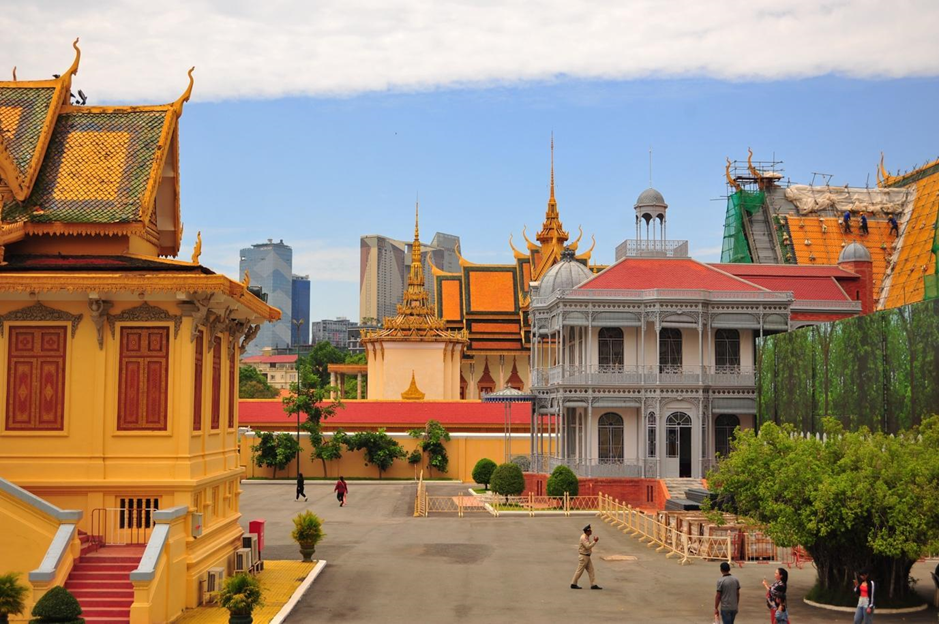The Forgotten Voices of Cambodia: Indigenous Memory, Survival and the Quest for National Unity
- Youk Chhang

- Aug 27
- 4 min read
In Cambodia, the word ‘memory’ does not belong only to history books or the archives of Phnom Penh. It also resides in the dense forest, in the heart of the mountains and in the murmur of languages that are hardly heard in cities anymore.

Indigenous peoples – Bunong, Kuy, Jarai, Tampuan and many others – carry within them a fundamental truth: that of having survived historical upheavals, political violence and modern injunctions that threaten, day after day, to dilute their cultures in the national mainstream.
It is this fragile balance that the Documentation Centre of Cambodia (DC-Cam) has chosen to explore in a project dedicated to indigenous voices. Building on its colossal archival work on the Khmer Rouge regime, DC-Cam has broadened its scope to give a voice to those who are rarely heard: the forest and mountain communities, long marginalised within the national structure. Their words are not only a testimony to suffering, but a call for unity, recognition and respect for plural identities within a nation too often portrayed in a uniform manner.
Survival as a common thread
In the testimonies collected, one expression comes up again and again: ‘survive’. Indigenous memory is above all one of survival – of wars, forced displacement, persecution and contempt. Under the Khmer Rouge, several villages were dispersed, their rituals banned and their forests confiscated. The knowledge passed down by elders – songs, medicines, cosmogonies – was diminished by silence or fear.
But survival is not just a thing of the past. Today, it is expressed in the struggle for land, dignity and cultural recognition. Forestry, mining and agricultural projects are redrawing the country's map, threatening biodiversity but also the very foundations of these communities, which consider the forest to be a living and sacred entity.

Development or disappearance?
The word ‘development’, pronounced in Phnom Penh as a horizon of prosperity, is perceived differently in Mondolkiri or Ratanakiri. For indigenous peoples, it sometimes rhymes with expropriation, acculturation and loss of autonomy. Where companies see hectares of exploitable land, villagers see the continuity of generations, family cemeteries and the spirit of their ancestors.
However, it would be a mistake to reduce this opposition to a simple conflict between tradition and modernity. Many young indigenous people claim a dual identity: they are fully Khmer citizens, while proudly defending their inherited identity or identities. The internet, education and openness to the world now offer them new weapons to preserve their cultures other than through simple silent resistance.
Memory as a national cement
The work of DC-Cam raises a crucial question: can national unity be built by leaving aside those whose voices have been forgotten? Cambodia's recent history has shown how exclusion can fuel division and violence. Conversely, recognising multiple memories can become a glue that strengthens unity.
The stories of the Bunong and Kuy elders are not just local anecdotes; they open a window onto a broader conception of Cambodian identity. An identity that is not monolithic, but rich in its diversity. In this process, giving a voice to these cultures does not mean freezing them in a folkloric past, but recognising that they are part of the country's present and future.

A lesson for the national economy
These voices also resonate in the economic sphere. Tourism development, for example, cannot ignore the contribution of indigenous communities. Their ecological knowledge, mythological narratives and sustainable practices are assets for Cambodia as it seeks to combine growth with preservation.
Similarly, in agriculture and crafts, local communities have production models that could inspire alternatives to intensive farming.
Marginalising them means depriving ourselves of this wealth. Fully integrating them means broadening the country's economic base while promoting an intangible heritage that is unique in Southeast Asia.
Towards pluralistic unity
Through this project, DC-Cam reminds us that survival is not only physical but also cultural. It requires recognition, listening and, above all, a place in the grand national narrative. Recognising indigenous peoples is not about opposing ‘them’ and “us”; it is about broadening the definition of ‘us’.
Twenty-first-century Cambodia thus faces a choice: to build its unity on oblivion or on plurality. By allowing the voices of indigenous communities to be heard, it is not inventing a new Cambodia; it is rediscovering what has always existed, hidden in the shadows: a cultural mosaic whose vitality can become the surest guarantee of unity and peace.
SO FARINA,
Senior Deputy Director
Cambodia Documentation Centre







Comments